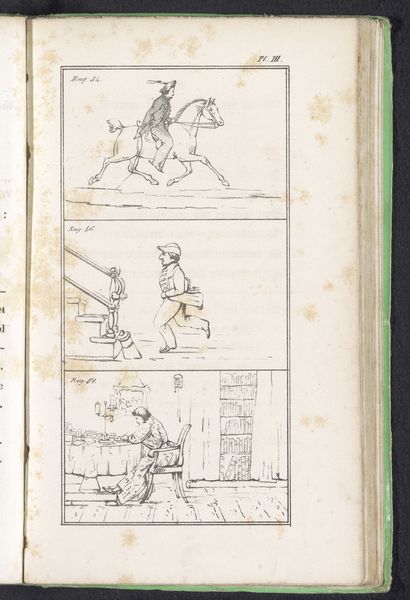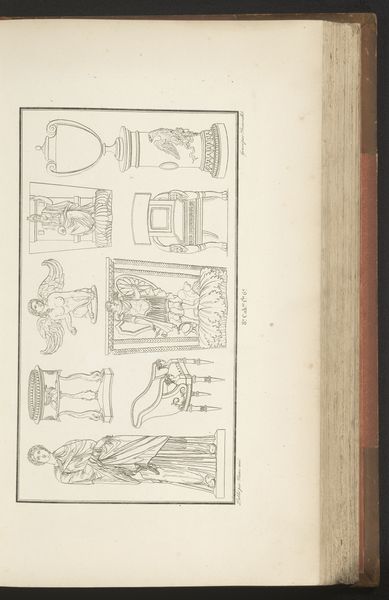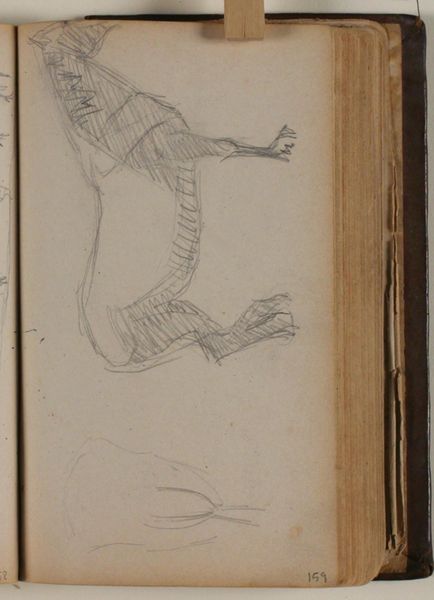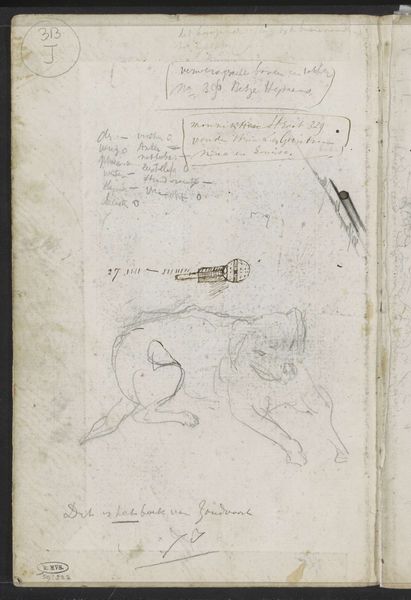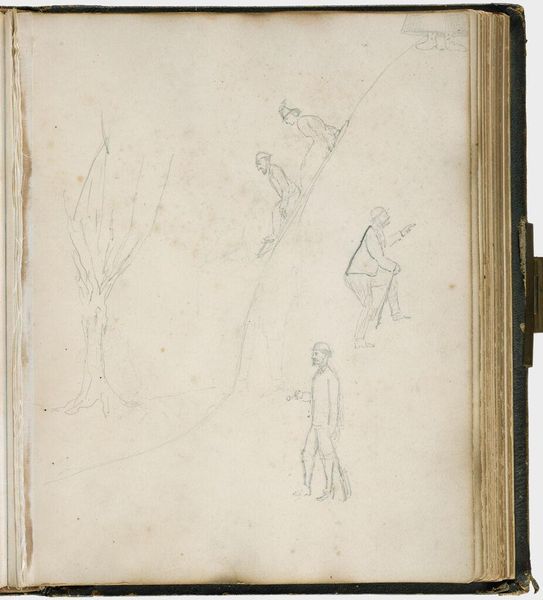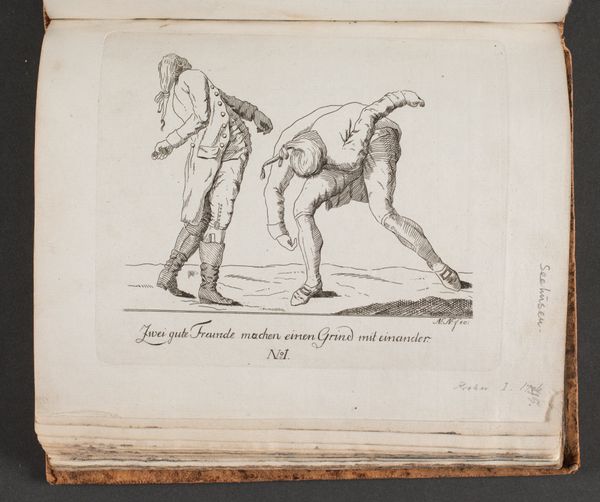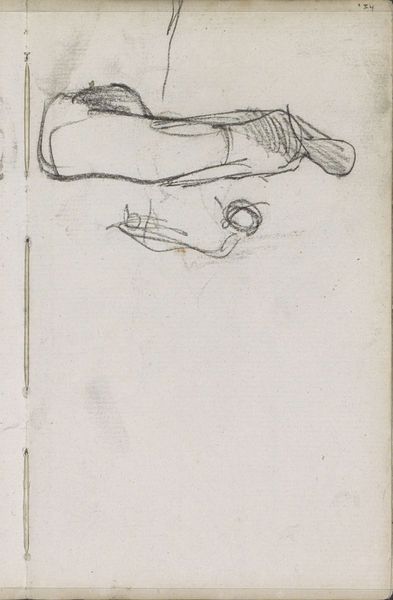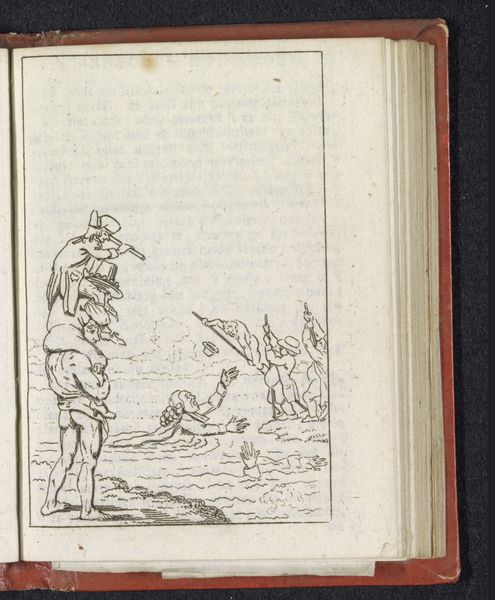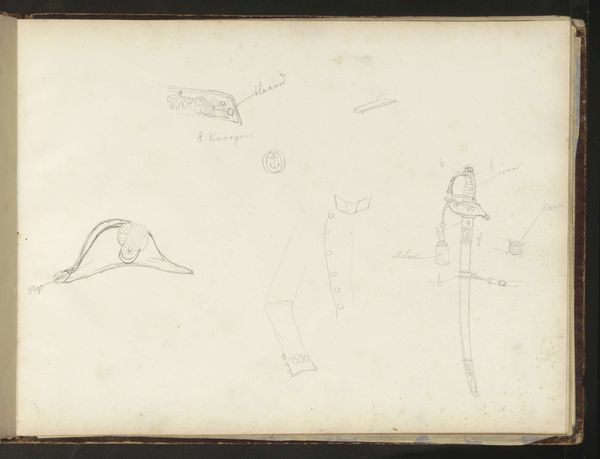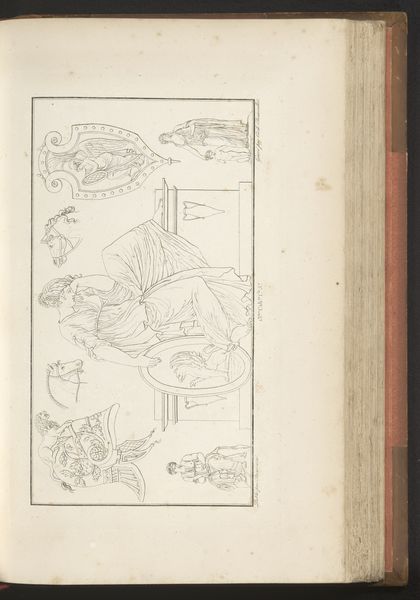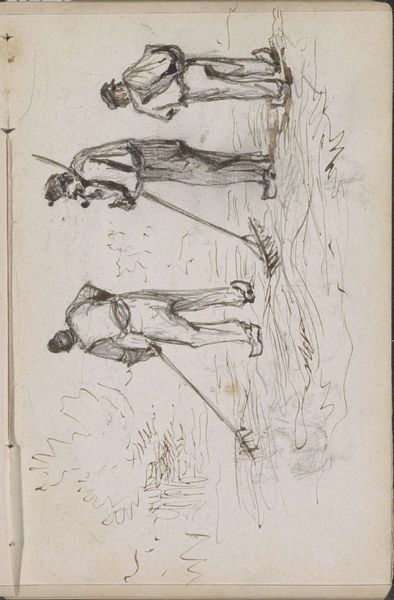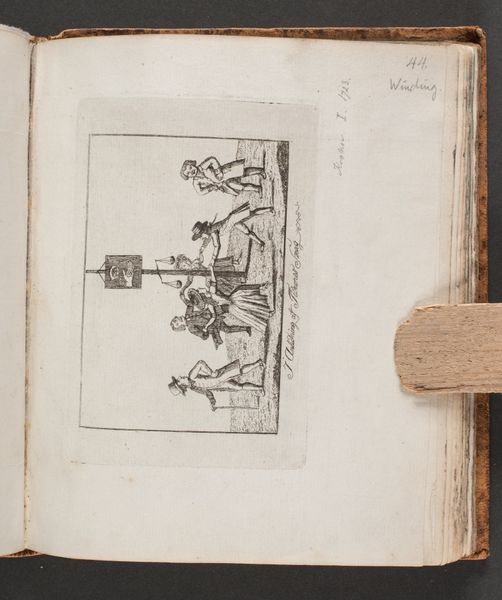
drawing, paper, ink
#
portrait
#
drawing
#
paper
#
ink
#
romanticism
#
line
#
genre-painting
Dimensions: height 175 mm, width 100 mm
Copyright: Rijks Museum: Open Domain
Curator: Here we have a lithograph from an 1842 student almanac in Utrecht. It's an anonymous work rendered in ink on paper. The almanac itself, as a manufactured object, provides insights into the student culture of the period. Editor: Immediately, I am struck by the stark, satirical quality of these vignettes, especially in contrast with other portraiture styles that were popular at this time. The exaggerated lines give each image a certain harshness, even a sense of mocking power dynamics within the culture. Curator: Exactly. Look at the precise line work used to delineate the clothing in the top image and compare that to the sketchiness used to show landscape. I wonder about the relative ease of printing these illustrations compared to commissioning unique images, and how access to the almanac democratized the dissemination of such pointed cultural commentary. Editor: Definitely. Consider how that top panel illustrates gender dynamics of the time period. A man politely tipping his hat to the distant woman in what seems to be a public square. Is he being respectful or dismissive? The deliberate blankness of her expression leaves so much open to interpretation. What expectations existed for both of them at the time? Curator: And consider the lower image: a depiction of age and apparent poverty, made light of through caricature and placed within this context of student life and youthful humor. There's such a contrast of social positions implied here, mediated by the affordability of paper and ink! Editor: The focus on a singular ring in the second sketch also resonates. Who wore the ring? Who made it, and under what labor conditions? How does this comment on ideals of wealth, ownership, or promise? And also: who and how was this material being distributed or kept secret? It's a material shorthand for class and aspiration, deliberately placed in juxtaposition with representations of youth and poverty. Curator: Right, and looking at it purely from a material perspective, lithography allowed for mass production and wider dissemination of images and texts among student and non student populations. The materiality allowed for ideas to circulate at faster speeds. It created accessibility while contributing to cultural change, capturing its tensions. Editor: It's a remarkable and nuanced critique embedded in seemingly simple drawings, brought to life by material choices and disseminated to a youthful and influential audience, creating conversations in both expected and unexpected ways. Curator: Indeed, reminding us that even seemingly trivial prints in throwaway pamphlets like this can open a rich window into the complex intersections of art, commerce, and societal values of the past.
Comments
No comments
Be the first to comment and join the conversation on the ultimate creative platform.
